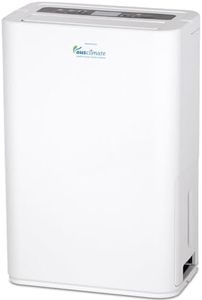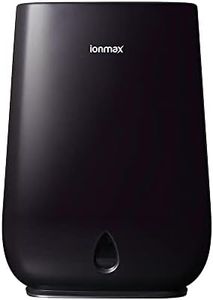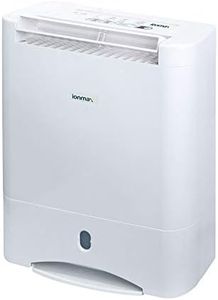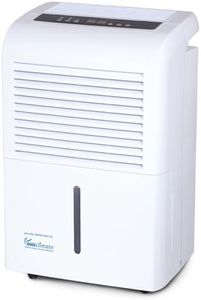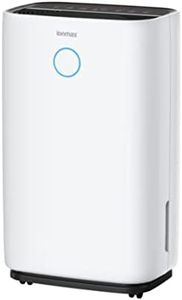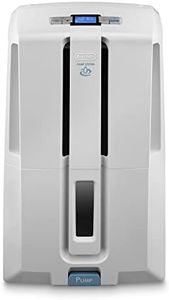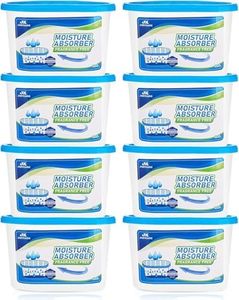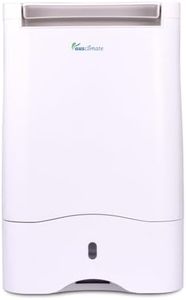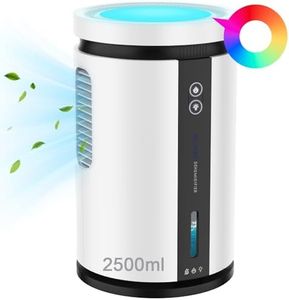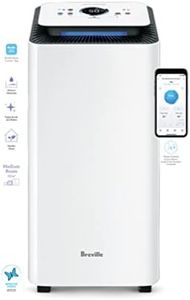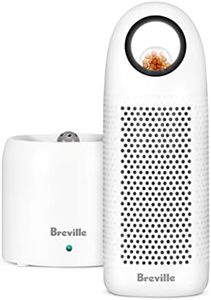We Use CookiesWe use cookies to enhance the security, performance,
functionality and for analytical and promotional activities. By continuing to browse this site you
are agreeing to our privacy policy
10 Best Dehumidifiers
From leading brands and best sellers available on the web.By clicking on a link to a third party's website, log data is shared with that third party.
Buying Guide for the Best Dehumidifiers
Choosing a dehumidifier isn't as daunting as it might seem. The right one will make your space more comfortable by reducing excess moisture, helping to prevent mold, mildew, and musty smells. Start by considering the size of the area where you'll use the dehumidifier, the typical humidity levels, and how easy you'd like it to be to operate and maintain. By understanding key features and how they relate to your daily needs, you can select a model that keeps your home healthy and pleasant.Capacity (Pint Removal per Day)This tells you how much moisture the dehumidifier can remove from the air in 24 hours, usually measured in pints. It's important because a unit that's too small won't be effective, while one that's too large may use more energy than needed. For small rooms like bathrooms or closets, a lower capacity (10–20 pints) is enough, for medium-sized spaces (bedrooms or small basements), aim for 20–35 pints, and for large or very damp spaces like basements, consider 35 pints or more. Match capacity to the size and dampness of your space for best results.
Room Size CoverageRoom size coverage specifies the maximum area the dehumidifier can handle, typically given in square feet. This matters because a device that covers too small an area won't be effective in larger rooms. Small units are suitable for spaces up to 300 square feet, medium units handle 300–800 square feet, and large ones can work in areas over 800 square feet. Measure your room and choose a dehumidifier rated for slightly more than your space, especially if humidity is consistently high.
Water Tank CapacityThe water tank holds the moisture pulled from the air. A larger tank means you won't have to empty it as often, which is convenient if you run your dehumidifier all day. Tanks can range from under a gallon to two gallons or more. Consider how often you want to empty the tank—if the unit doesn't have a hose for continuous drainage, and you'll be using it often, a bigger tank saves hassle.
Auto Shutoff and Continuous Drain OptionAuto shutoff turns the dehumidifier off when the tank is full, preventing spills or leaks. Some models also offer a continuous drain option where a hose can be attached so water drains automatically. Auto shutoff is important for safety and ease, while continuous drain is handy for people who don't want to deal with emptying the tank, especially in places where the unit runs constantly, like basements.
Humidity Control (Humidistat)The humidistat lets you set your desired humidity level, and the dehumidifier will turn on and off to maintain that setting. This is important to keep your space comfortable without over-drying the air. Adjustable humidistats allow you to customize the environment; for most homes, keeping humidity between 40% and 60% works well. If you want set-it-and-forget-it convenience, look for an easy-to-use humidistat.
Noise LevelDehumidifiers make varying amounts of noise, which is measured in decibels (dB). If you’ll be using it in a living room, bedroom, or office, a quieter unit will matter more. Quiet models run around 45 dB or less, while standard ones may hit 50–55 dB. Decide where you plan to use the machine most to strike the right balance between performance and comfort.
Portability and SizeThe physical size and how easy it is to move the dehumidifier matters, especially if you plan to use it in different rooms or store it when not in use. Look for features like carrying handles, wheels, and a manageable weight. Larger units typically remove more moisture but are bulkier, so choose according to how much space you have and whether you need to move it around.
Filter Type and MaintenanceMost dehumidifiers use a filter to catch dust and airborne particles, keeping both the air and the unit cleaner. Some have washable filters, while others need regular replacement. If you have allergies or want low-maintenance operation, washable filters offer convenience. Consider how easy it is to access and clean or change the filter, as this affects how well your dehumidifier works over time.
